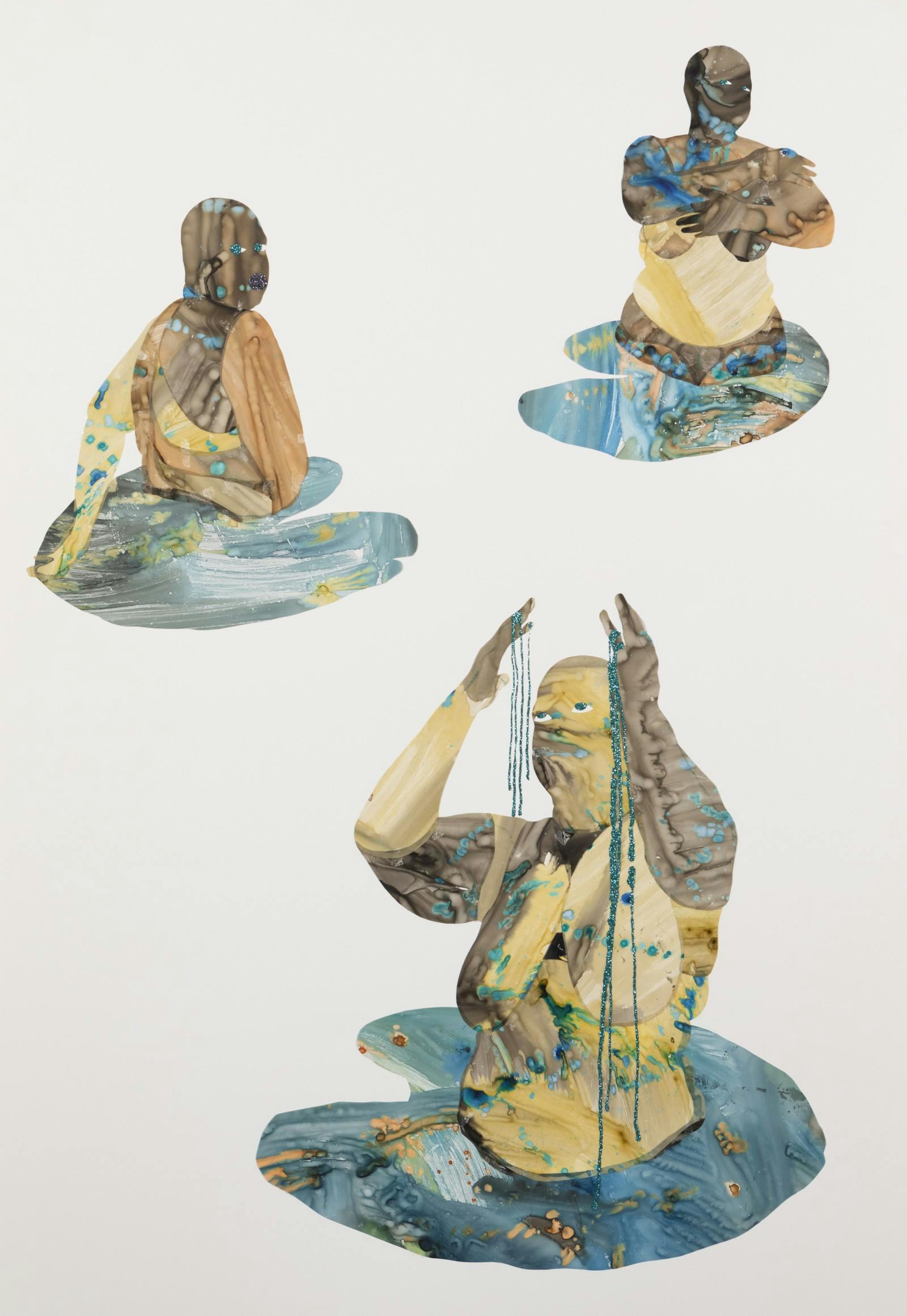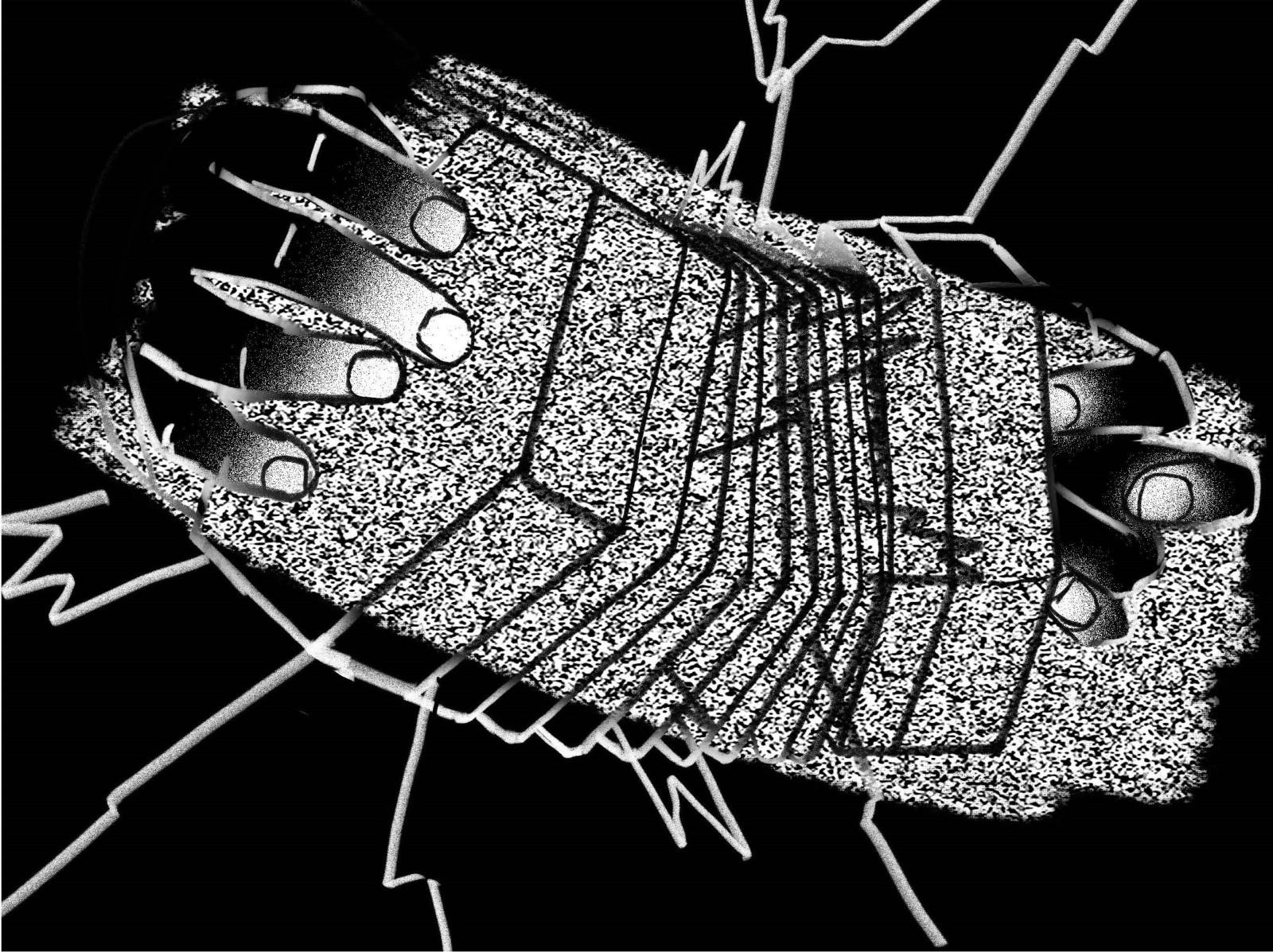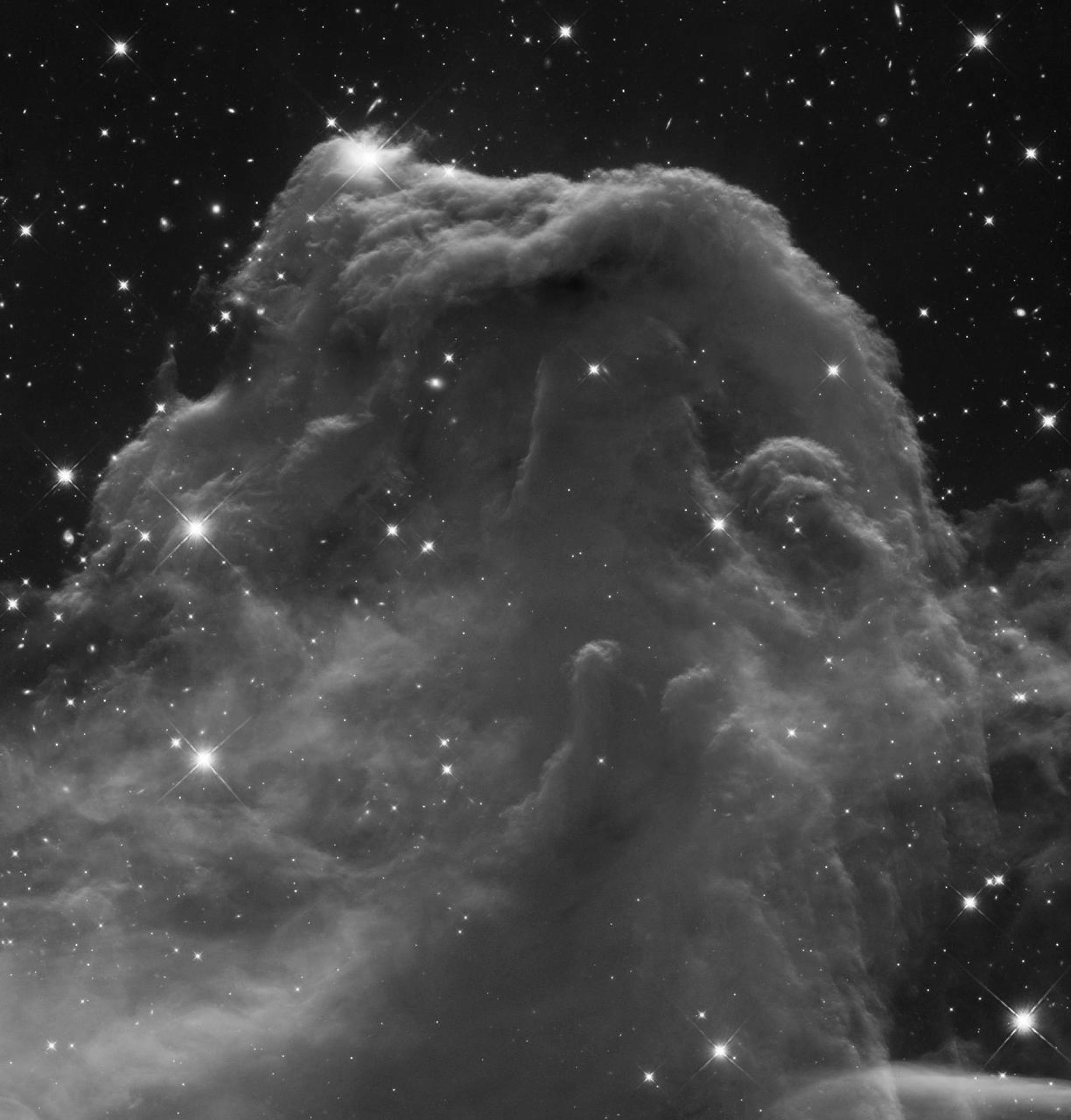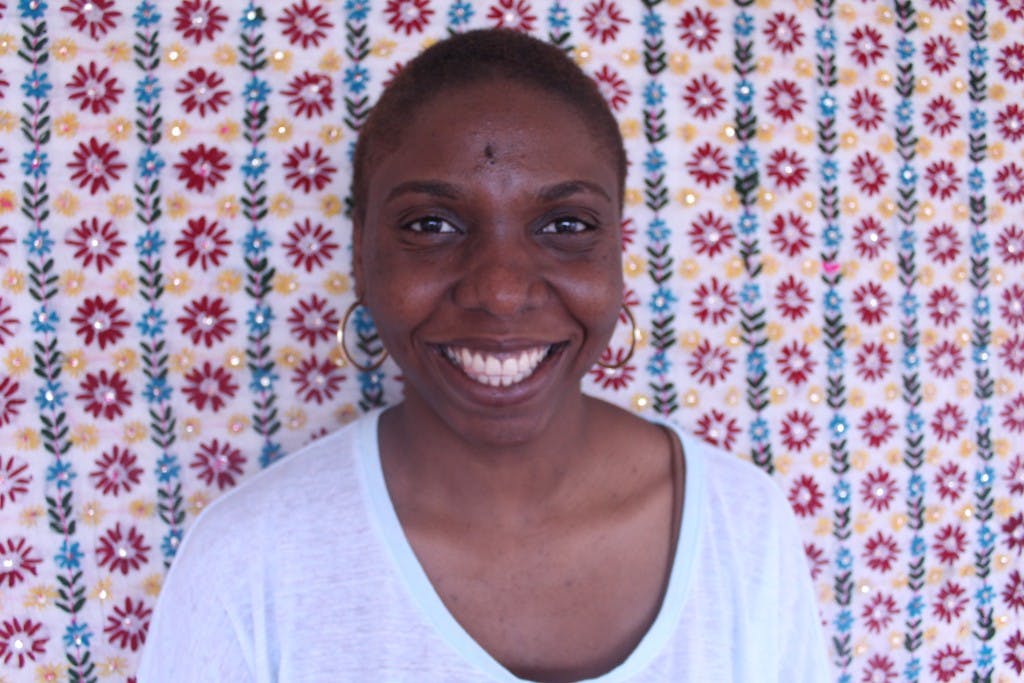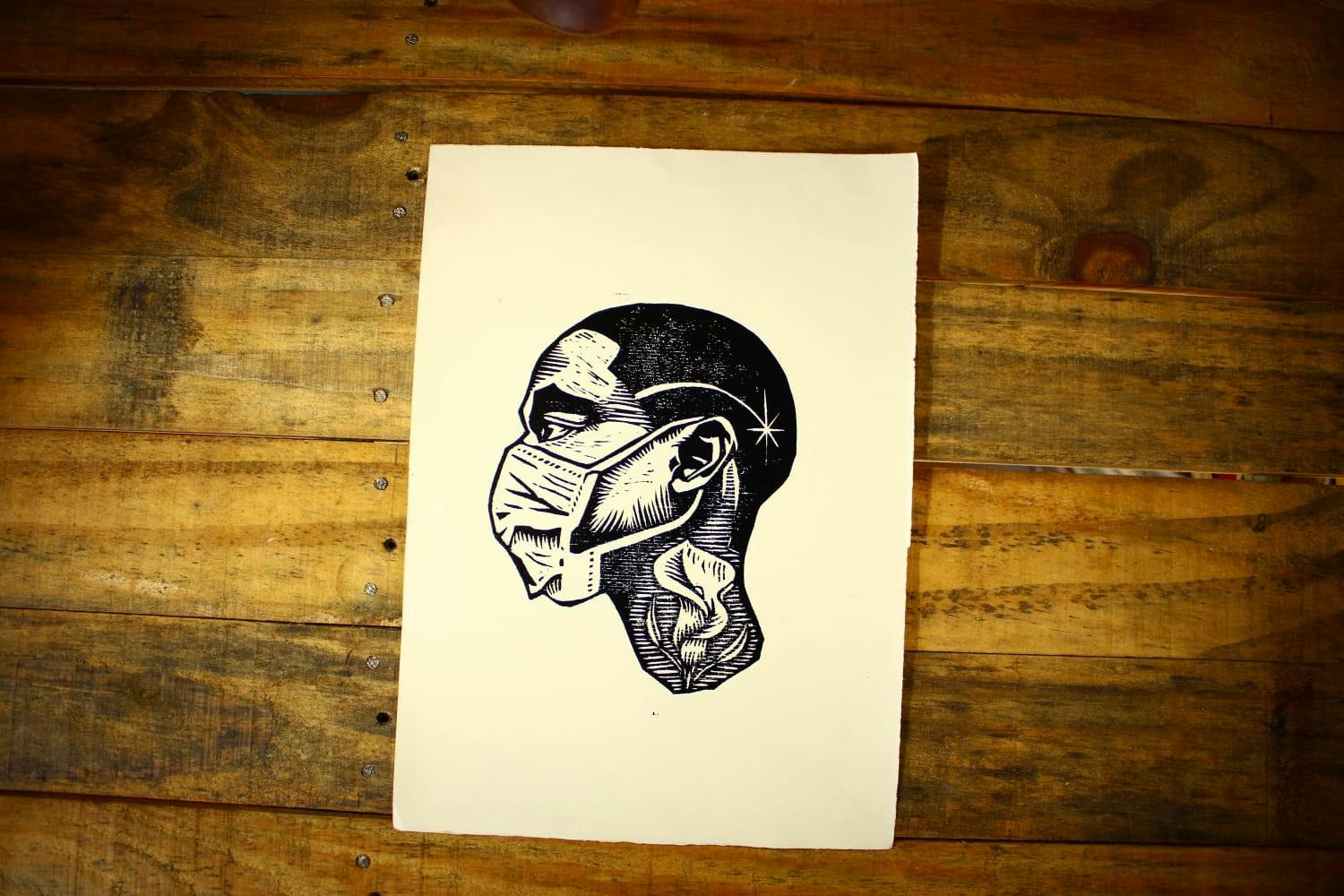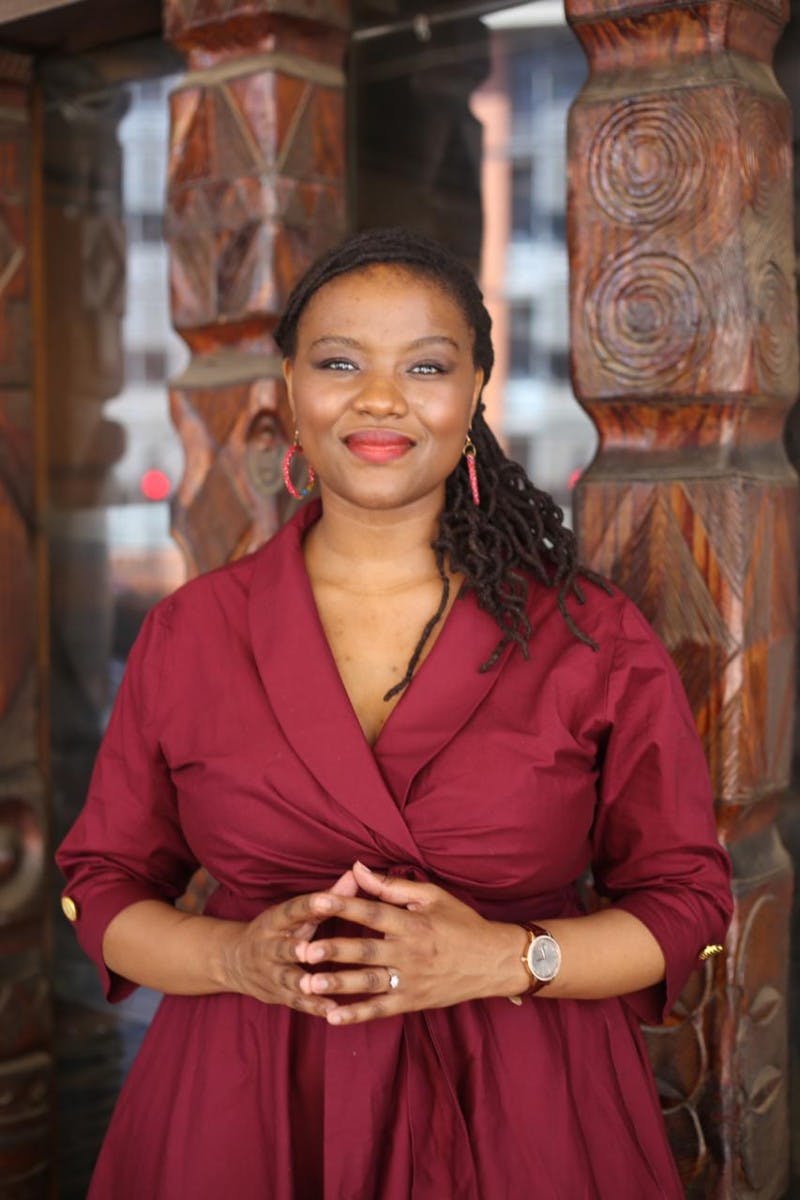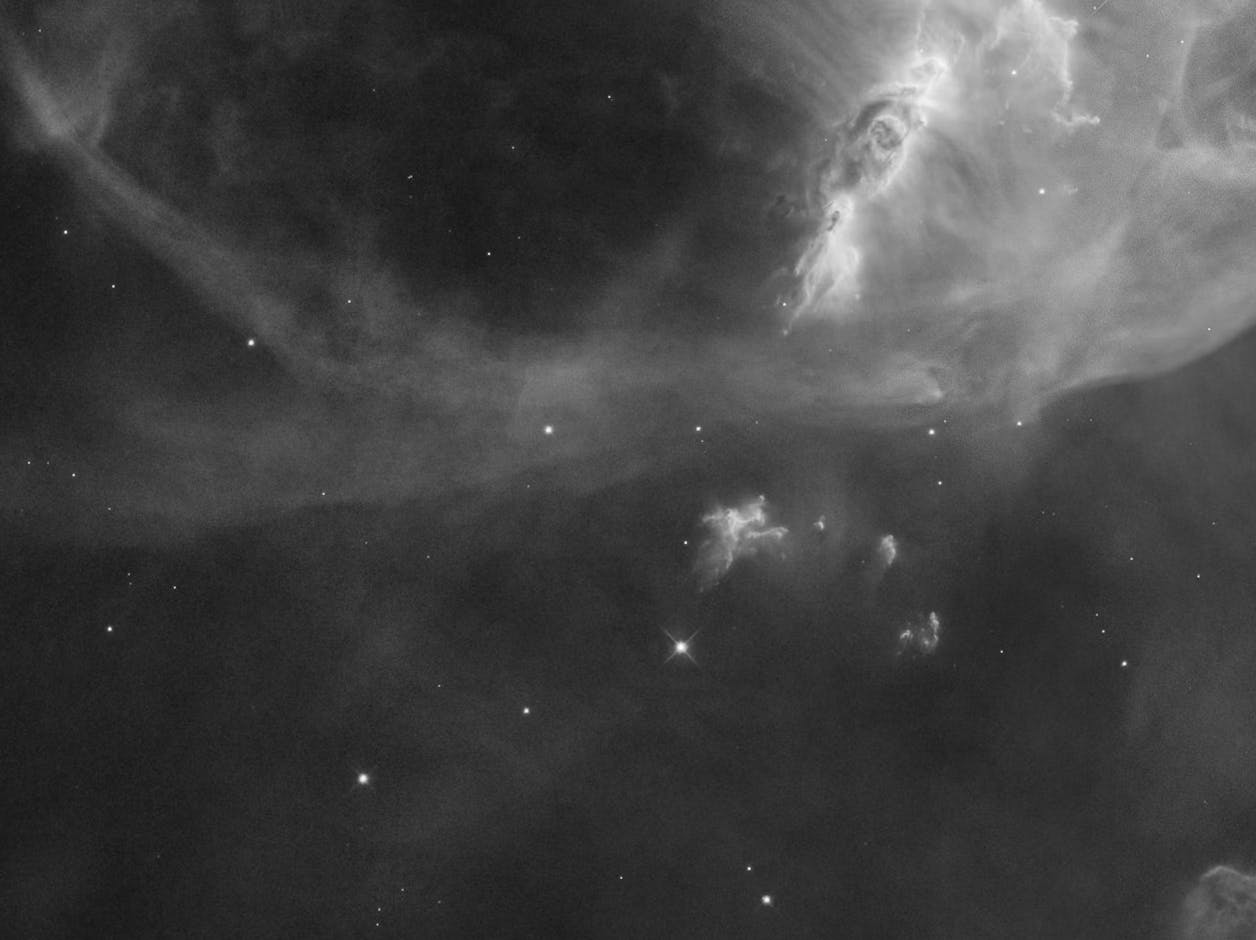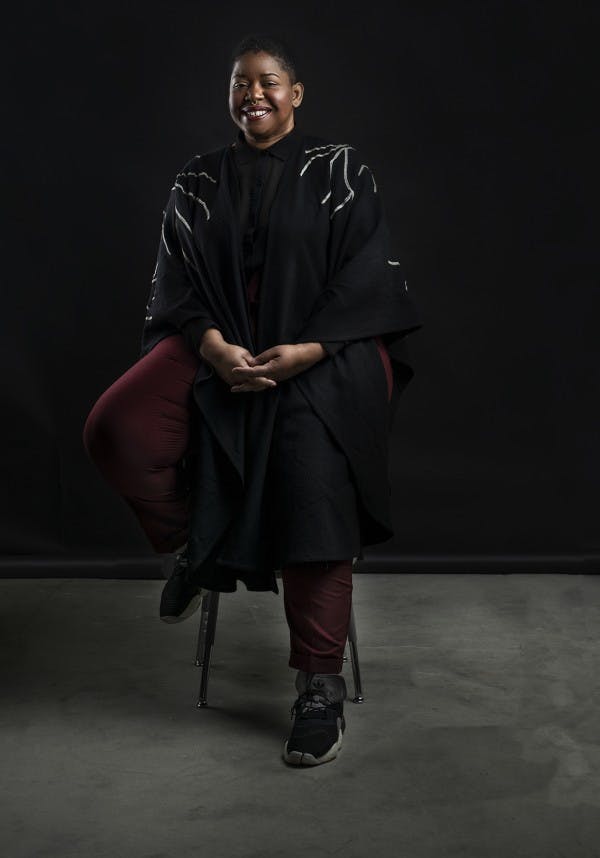Our fourth issue draws attention to the ways in which race—specifically Blackness—is chartered and codified across different geospatial terrains. In our lead feature, writer Lindokuhle Nkosi draws on Zora Neale Hurston’s famous 1928 essay “How It Feels to Be Colored Me” to reflect on the Season 2 finale of our podcast Race Beyond Borders. Her essay brings into sharp focus the many ways geography impacts the experience of Blackness. Musicologist Willemien Froneman from the Africa Open Institute at Stellenbosch University introduces us to Refentse Morake, South Africa's first Black boeremusiek icon, to invite a deeper, more critical, understanding of musical interracialism. Specifically, Froneman argues that while music is often portrayed as a great unifier, in fact, an examination and deconstruction of the patterns of power underlying its cultural production yields a different reality.
Art
Using a mixture of mylar, ink, pigment, and glitter, M. Florine creates depictions of voluptuous bodies that appear weightless-floating, as if transcending some higher plane.
Feature
In this lead feature, writer Lindokuhle Nkosi uses the famed words from Zora Neale Hurston’s essay "How It Feels to Be Colored Me" reflect on the Season 2 finale of our podcast, Race Beyond Borders, in which our outgoing host Sebabatso Manoeli-Lesame and incoming host Nigel Richard revisit the season’s sonic journey.
Event
On Tuesday June 13 our community convened in Harlem to celebrate the launch of our first-ever print edition.
By
Modupeola OyeboluNigeria, United States of America
Feature
Touted as South Africa’s first Black boeremusiek star, Refentse Morake’s meteoric rise from Sebokeng, one of several townships established on the peripheries of Johannesburg by the apartheid state, to national pop-sensation has been heralded as a symbol of South Africa’s triumph over racism. But should his popularity, when considered in a broader historical context and examined more closely, be be considered an example of successful interracialism?
Art
Using xylograph techniques, Ederson Pereira dos Santos conveys the contemporary aesthetics, humanity, and strength of Black Brazilian men and challenges conventional notions of masculinity.
By
Ederson Pereira dos SantosRace Beyond Borders
In the Season 2 finale of Race Beyond Borders, outgoing host Sebabatso Manoeli-Lesame and incoming host Nigel Richard reflect on some of the critical questions raised this season. This lively conversation, which at times feels like a dance, invites listeners to look back on the season’s sonic safari that was launched in Italy, where Black Italians grapple with what to call themselves, and landed in Oceania, where liberation struggles actively engaged with Black internationalism in their battles against European colonial rule.
Race Beyond Borders
Season 2 of our podcast Race Beyond Borders travelled across the world in search of underexplored experiences of Blackness. In charting the global African diaspora—from Italy to Iran, Martinique to Colombia—this season raised new questions about what it means to be Black beyond conventional notions and beyond white supremacy. If you haven't already listened to the season in its entirety, we encourage you to do so. You can start with the three most popular episodes from the season which offer compelling lessons for constructing expansive, decolonised Black identities and home in on the lived experiences of Black people from Iran, Martinique and Italy.
Our third issue explores the place of the past and raises questions of what, if anything, it means for us now. In the lead feature, historians Christopher L. Brown and Sebabatso C. Manoeli-Lesame call attention to moments prior to colonisation when power relations between Africa and Europe were in a state of flux and yet to settle on being distinctly colonial. Using these moments, Manoeli-Lesame and Brown argue that these un-colonial episodes from the past hold the keys to imagining decolonial futures. In the second feature, art historian Leslie M. Wilson examines Sydelle Willow Smith’s photographic series on white South Africans in the post-apartheid era. Wilson asks if it is possible to leave behind a past that is still very much with us. The articles in this issue are a reminder that even though humans construct ways to categorise and distinguish between periods, the deep connections between times are difficult to disentangle and parcel out. In a way, this hindsight issue is an invitation to reflect on the past’s unfinished business.
